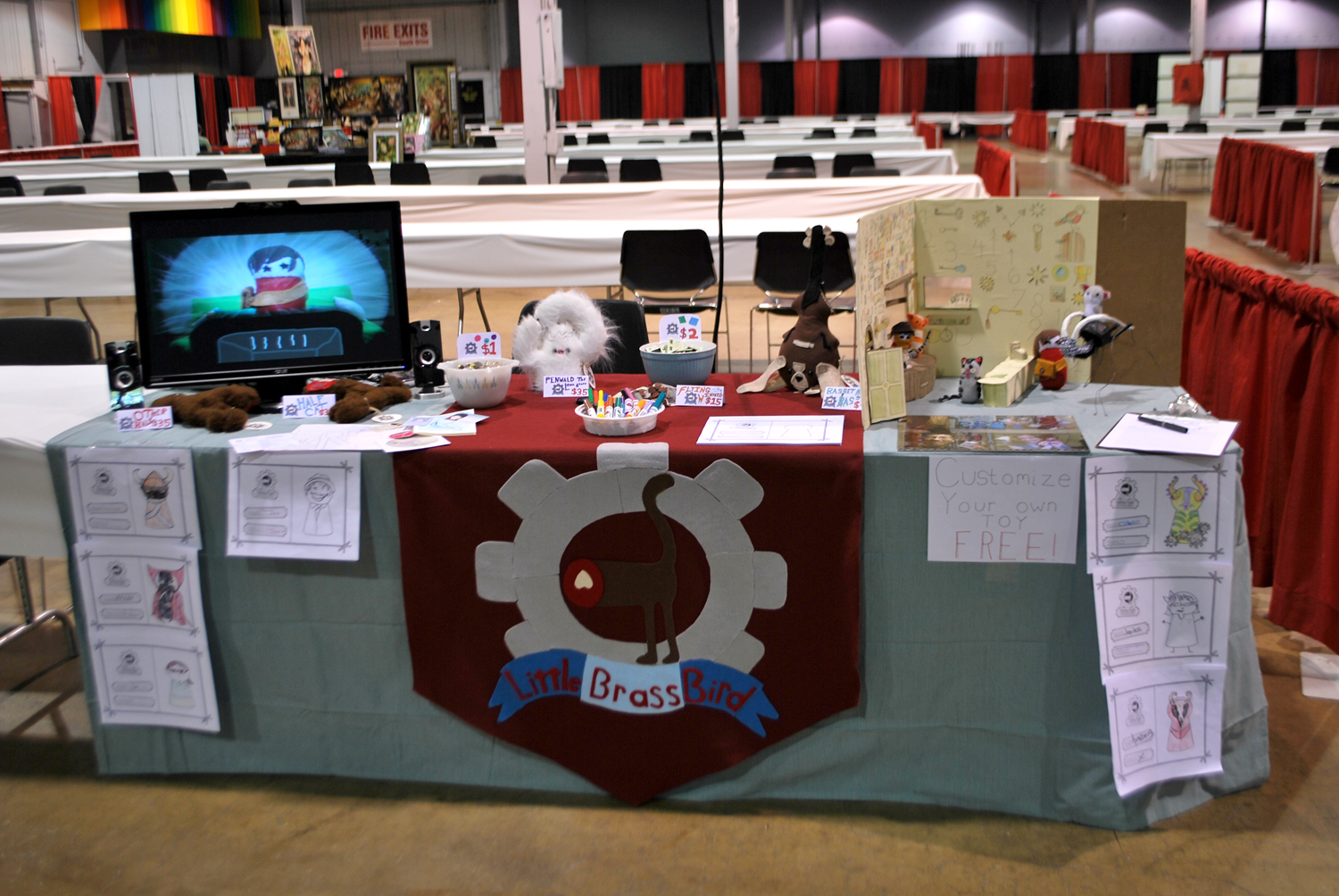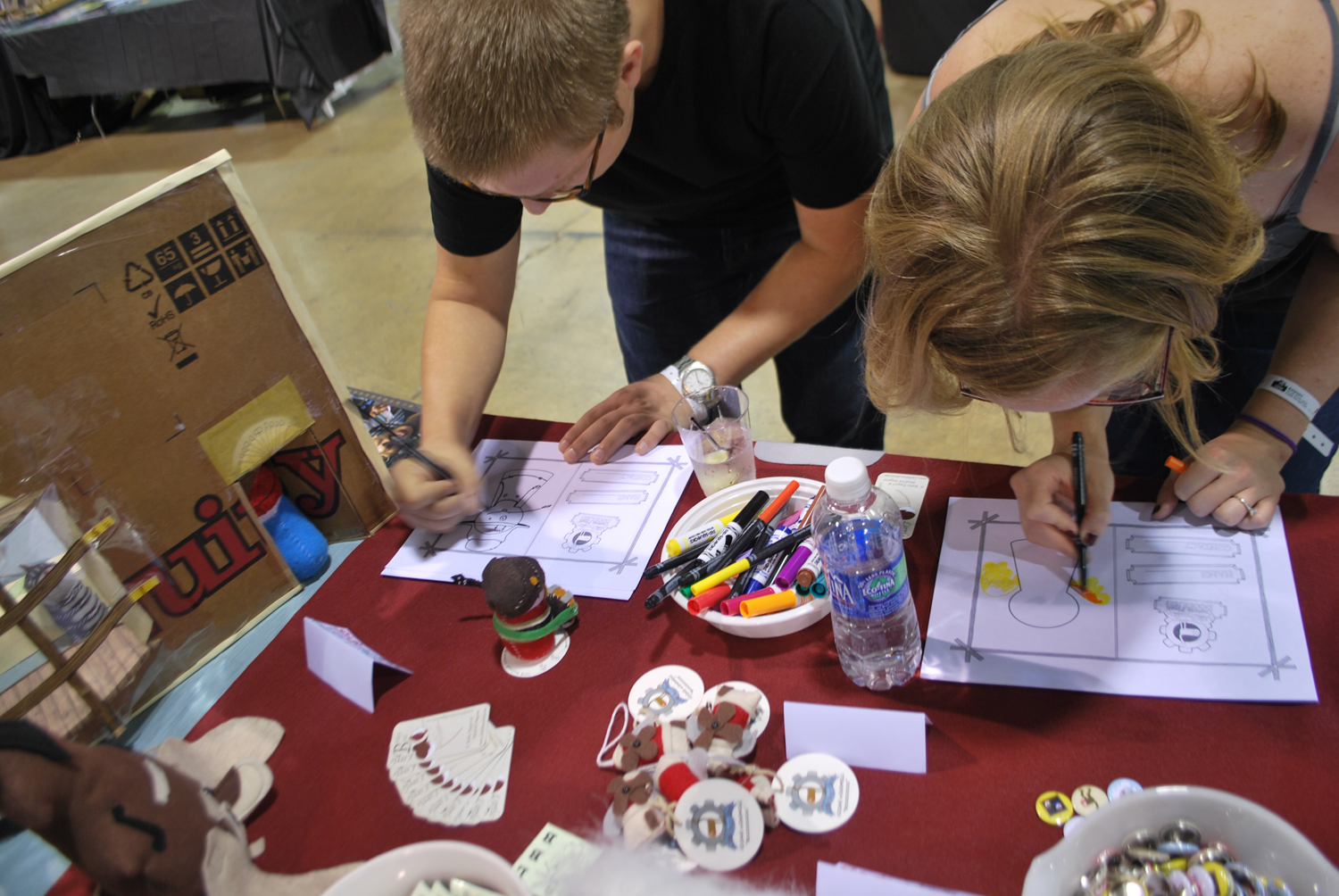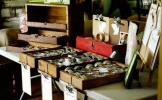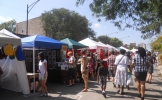Selling at craft fairs and conventions is a great way to improve your social skills and meet your niche up close. You may already be be selling to stores and using social networking online but now it just might be time to do the unthinkable and talk to your buyers face to face. Here are some craft fair tips to wow con-goers and intrigue festival attendees.
Table Setup
Decor
When selling at craft fairs, you have to approach your table design like a website or business card. First impression is everything. Most places give a standard four- to-eight-foot table and two chairs. Try these craft fair tips for designing your table in motifs that reflect your business:
• Use similar colors and materials. Tablecloths are a good start.
• Display your products as fashionably as possible. Stray from the ordinary —for example instead of a standard rack for necklaces, use the branches of a small tree.
• Design your table in accordance to where you are. Are you indoors or outdoors? Is the event a comic convention or local craft fair? Think about the appeal of the people you are pitching your product to.

Signage
Let your name be heard (or seen) when you're selling at craft fairs. Create a nice big banner or sign to represent your business. Line your business cards in front of the table. Allow the buyer to absorb your name with ease so they don’t forget about you as soon as they leave. The best part about selling at craft fairs and cons is the potential of returning customers.

Etiquette
You want to stick out from the rest of the vendors when selling at craft fairs, but you don’t want to annoy your neighboring tables. Refrain from noisy features like speakers that loop your favorite song. Your table can be big, but not so big that it blocks the table next to you.
Networking
Selling at craft fairs and conventions is a great way to meet the other artists and exchange information. If you have time, walk around and look and enjoy yourself. You’ll be surprised how many friends you’ll make just by saying hello to other tables. You might befriend someone who screen-prints T-shirts or owns a custom button company. Friending other companies can build alliances and encourage cross promotion. We’re all competitors, but ultimately we’re all artists and we can achieve more together than individually.
Sales Skills
Approaching the Customer
Learning to be a good salesman can be tough and takes practice. Most importantly, you have to be confident. Take pride in your work and be excited to show them. You want to say hello to people but don’t expect them to buy right away. Most people come to a con or fair with a set budget. They prefer to first walk the perimeter and see everything available before committing to a buy. Yelling deals and features to your customers will put them off. You want to invite them in on their own terms. You don’t want to come off as a pushy salesperson when selling at craft fairs.
Reading The Customer
If you have a lot displayed on your table, you’ll want to recommend certain items. Observe your customer. Do they wear specific styles of necklaces? Are they carrying plush toys? Talk about what your customer is interested in; if they’re looking a button, don’t try to sell them a ring. Allow them to touch, pick up, or try on your products. Try your best to talk about your products and not their prices, unless customers ask about pricing.
Bigger Isn't Always Better
Don’t be fooled by the size of the craft fair or convention. You’ll probably have a bigger presence when selling at craft fairs if you start with smaller events and work your way up. As your business grows, so will your shows.






